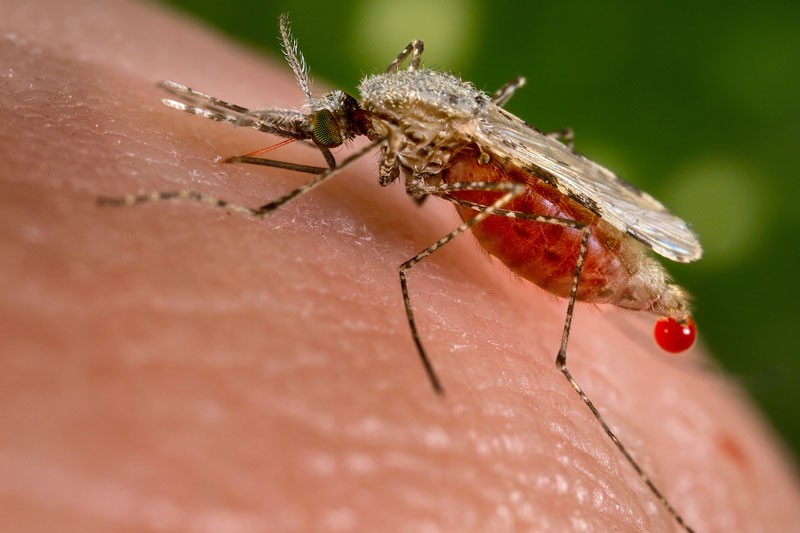The government on Wednesday launched a $142 million, five-year plan to eliminate cases of the deadliest form of malaria in Cambodia by 2020, though current funding levels are far short of the target and at least one critical program is set to run out of money before 2018.
The Cambodia Malaria Elimination Action Framework 2016-2020 is part of the government’s larger goal of eliminating all malaria cases, from any of the mosquito-borne parasite’s many species, by 2025.

Health workers have made major gains against malaria over the past several years, thanks in large part to the distribution of insecticide-treated mosquito nets and village malaria workers (VMWs) stationed in rural areas far from public health clinics. But resistance to the best available drugs for the deadliest strain of malaria, Plasmodium falciparum, is spreading, and total cases shot up from 25,000 in 2014 to 51,000 last year.
The parasite also killed 10 people last year, as many as the year before, dashing the government’s hopes of achieving zero fatalities by 2015.
With its new plan, the government hopes to eliminate all falciparum cases—and all malaria deaths—by 2020.
Huy Rekol, who heads the Health Ministry’s National Malaria Center, said the new plan improved on the old by going into more detail about what needed to be done and how to do it.
“After we start implementing, so far, after 2011 until now, we learned a lot, that some activities…we have to split it more into detail, otherwise it will [leave] us a little bit confused in some cases,” he said on the sidelines of the plan’s launch in Phnom Penh.
“We tried to adapt our national strategy to be a detailed framework, just focus much more on falciparum,” he said. “This is the difference between the original document and the new document.”
Among the plan’s improvements is a beefed up and more pro-active approach to finding infected patients that will, health officials hope, be able to find all cases across the country by 2017. It’s the fourth of the plan’s five main goals. But ranked in order of importance, Mr. Rekol said, it should be No. 1.
“So far, we just sit in the office and wait for the case to come to the health facility, and for cases to come meet the VMW,” he said.
“But for an active surveillance system, it means that we, the medical doctors, we have to go to the community ourselves and detect the case,” he added. “So today, how many people move or go to the area with high risk of malaria? And then how many persons come back? And among those persons, how many suspected cases will exist for that group? This is what we call an active surveillance system.”
Luciano Tuseo, who heads the World Health Organization’s malaria program in Cambodia and helped write the new plan, said it would drastically improve cooperation between the government and its partners with the help of a new Malaria Elimination Task Force.
“It will change everything,” Mr. Tuseo said of the new plan in an interview late last year. “The first thing that will change is partner coordination…. This is a big issue.”
To put the plan into full force, the National Malaria Center will need a total of $142 million over the next five years. But even the money that has been budgeted through 2018 is only about half of what it needs to cover projected expenses, meaning the government will have to find more and start reallocating from elsewhere to meet its target.
The malaria center also faced a funding shortfall last year, when negotiations on budget oversight with the Global Fund to Fight Aids, Tuberculosis and Malaria—Cambodia’s main donor for malaria work—dragged on longer than expected. As a result, the government put off the monthly meetings it holds with VMWs—during which they get paid for their work —for the last six months of the year.
By December, the number of cases being reported to the government from the VMWs—who usually find about half of the cases in the country—fell nearly to zero.
“We are afraid that the case [patient] is going to meet VMWs, but the VMWs [do] not report to us,” Mr. Rekol said. “And we are afraid the case is going to meet the VMW and the VMW does not take care of the cases, because they feel, ‘Maybe I don’t get my incentive, so I don’t worry anymore.’”
The government and World Health Organization say the impasse with the Global Fund has been resolved and that its grants have started flowing again.
But Mr. Rekol said the fund’s coverage of VMWs was scheduled to last into 2017 only and urged donors to get ready to step in when the money runs out.
“What will happen after Global Fund ends the project?” he asked the crowd. “I am really concerned.”




